Pressure in a Static Fluid:
There are no restrictions on the direction of force that can be applied on the surface of a solid, but on the surface of a fluid at rest, a force cannot be imagined to act in any direction except at right angles to it. This is because fluid cannot sustain a tangential force. On a fluid at rest force simply acts normal to the surface. A force that acts normal to a given surface is known as thrust and the thrust per unit area measures the pressure. Thus,
The pressure at a particular point of a fluid is defined as the average thrust acting per unit area surrounding that point i.e.,
| p = F/A |
Where p is the pressure, F is the thrust, and A is the area. The SI unit of pressure is Nm-2 which is called a pascal (abbreviated to Pa).
Pressure is a scalar quantity. It has no fixed direction. A fluid under pressure exerts a force on any surface in contact with it. The direction of the force exerted by the liquid is decided by the orientation of the area presented to the fluid- in a static liquid this force is always normal to the area presented.
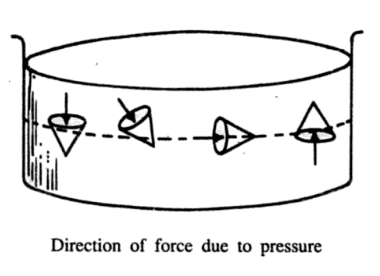
The above figure shows the direction of forces due to fluid pressure acting on the circular base of a conical body in its several orientations. We observe that the force due to fluid pressure may act vertically upward or vertically downward or towards left or right as the case may be.
Expression for Fluid Pressure: In order to find an expression for the pressure p at point D which is a depth h below the liquid surface, let us consider a small area A surrounding the point D, let the density of liquid be ρ and acceleration due to gravity be g. On drawing a small cylindrical volume on the base area A we find that, inside this cylinder,
| volume of liquid, V = Ah mass of liquid, m = Vρ = Ahρ weight of liquid, W = mg = Ahρg |
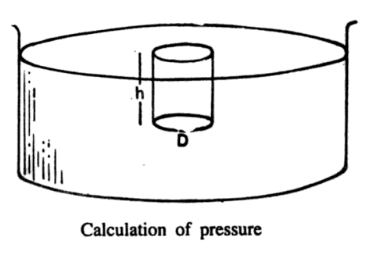
Since the thrust F at the bottom of the small cylinder is the same as the weight W of the liquid that it contains, therefore the pressure p is given by
| p = F/A = W/A = Ahρg/A Thus p = hρg |
The free surface of a liquid is always exposed to the atmosphere. If the atmosphere exerts a pressure po on the free surface of the liquid, then the total pressure at a point inside the liquid is given by
| p = po + hρg |
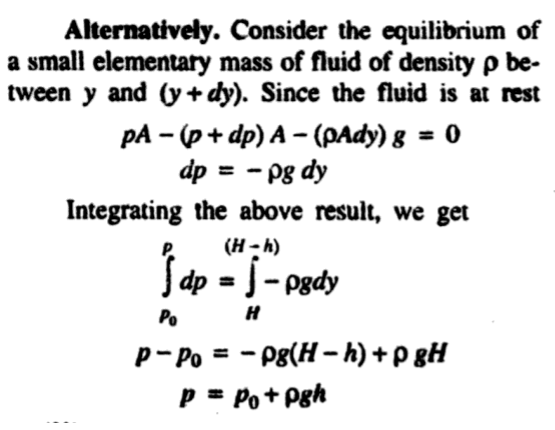
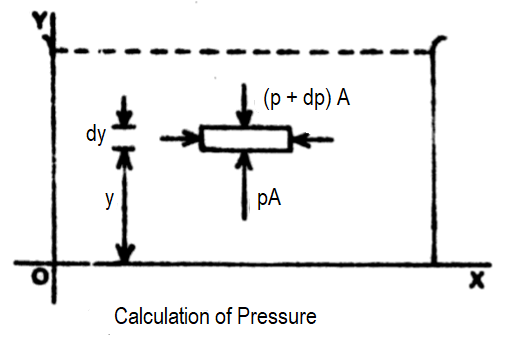
The pressure due to a liquid, therefore, depends on two factors:
- depth- the larger the depth, the greater would be the pressure.
- density- lighter liquid would produce less thrust and hence small pressure.
The pressure of the liquid is independent of the volume of the liquid and the shape of the container. The fact that pressure is independent and unrelated to the volume of the liquid and the shape of the container was pointed out by Pascal nearly three centuries ago. To repeat Pascal’s experiment three special vessels of different shapes and sizes are taken. These vessels have the same base area and can be screwed to the same socket of a special balance. A disc attached to the balance can press water tight against the bottom of each vessel. Thus the thrust exerted by liquid contained in each vessel can be measured. On performing the experiment it is found that the pressure exerted depends on the height and density of the liquid but is unrelated to the shape and volume of the liquid.
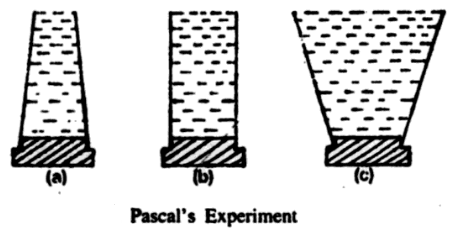
To explain the results of Pascal’s experiment, consider the below figure. The forces exerted by the liquid on different portions of the wall of the container must be perpendicular to the walls as shown in Figure (a). The walls, therefore, exert equal and opposite forces on the liquid as shown in Figure (b).

Since the walls of the vessel shown in Figure (b) are not vertical, the forces acting on the liquid are inclined. Resolving these forces into two components, we find that the horizontal components balance each other while vertical components act on the liquid in the upward direction. Hence the thrust on the bottom of the container is equal to the weight of liquid minus the upward component of the reaction forces acting on the sloping walls. Since the upward components balance the weight of liquid contained in the regions A and C, the net thrust on the bottom is only due to the weight of the liquid contained in the cylindrical region B.
Similarly, in Figure (c), the thrust at the bottom is the weight of the liquid plus the downward components of the reaction forces exerted by the sloping walls, hence it is again equal to the weight of the liquid contained in the cylindrical region B.
The below figure shows two cylindrical tubes with the same cross-sectional areas. Both contain water up to the same vertical height h. The pressure at the bottom of the cylinder with vertical walls is hρg but what about the pressure at the bottom of the other tube? Based on Pascal’s experiment discussed above, we find that the thrust at the bottom of both cylinders is the same and as their areas are equal the pressures are also equal. Hence pressure a the bottom of the inclined cylinder is also hρg. In other words, the pressure at a point simply depends on the vertical height of the liquid column.

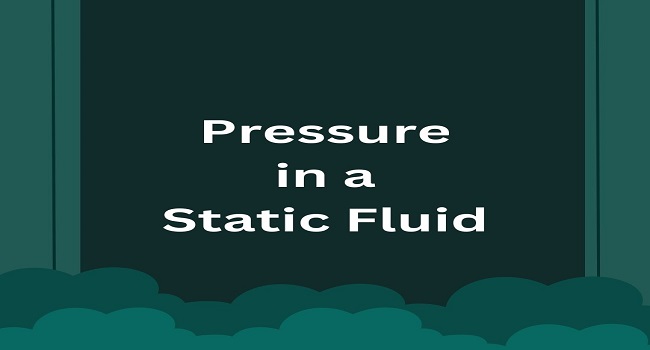





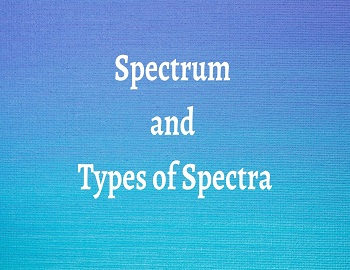


Comments (No)